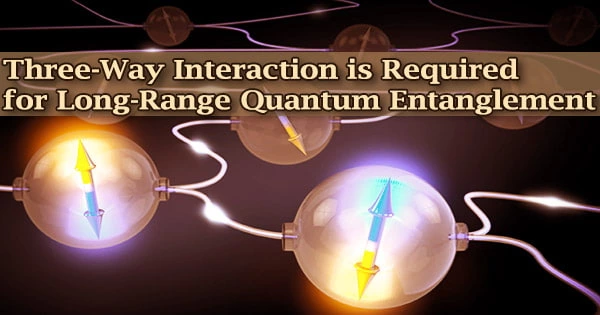Long-range entanglement can survive at temperatures exceeding absolute zero, according to a theoretical study, if the right conditions are met.
Quantum computing has been dubbed the next great leap forward in computing. Current systems, on the other hand, are only practically stable at temperatures near absolute zero.
For the first time, physicists have measured long-range quantum entanglement in specific, topologically structured phases of matter. This achievement, which was accomplished separately by two research groups employing connected superconducting circuits and atom arrays, could enable the construction of reliable quantum computer memories.
A new theorem developed by a Japanese research collaboration sheds light on which types of long-range quantum entanglement can survive at non-zero temperatures, revealing a fundamental aspect of macroscopic quantum phenomena and paving the way for further research into quantum systems and the development of new room-temperature stable quantum devices.
When things get really small, like one-thousandth the breadth of a human hair, classical physics rules are superseded with quantum physics rules. The quantum universe is strange and wonderful, and scientists still don’t fully comprehend much of it.
Large-scale or “macroscopic” quantum effects are important in unusual phenomena like superconductivity, which has the potential to revolutionize future energy transport, as well as the creation of quantum computers.
We provide simple no-go theorems that show what kinds of long-range entanglement can survive at non-zero temperatures. At temperatures above absolute zero, particles in a material vibrate and move around due to thermal energy, which acts against quantum entanglement. At arbitrary non-zero temperatures, no long-range entanglement can persist between only two subsystems.
Tomotaka Kuwahara
With the help of long-range quantum entanglement, it is possible to see and measure “quantumness” at this scale in specific systems. When a set of particles cannot be represented independently of each other, quantum entanglement arises, which Albert Einstein memorably described as “spooky action at a distance.”
This means that their properties are intertwined: if you can fully describe one particle, you can fully describe all of the particles with which it is entangled.
Long-range entanglement is at the heart of quantum information theory, and a better understanding of it could pave the way for quantum computing breakthroughs. Long-range quantum entanglement, on the other hand, is stable under certain circumstances, such as between three or more participants and at temperatures near absolute zero (-273°C).
What happens to two-party entangled systems at non-zero temperatures?
Researchers from Tokyo’s RIKEN Center for Advanced Intelligence Project and Yokohama’s Keio University have published a theoretical study in Physical Review X demonstrating long-range entanglement in bipartite systems at temperatures exceeding absolute zero.
“The purpose of our study was to identify a limitation on the structure of long-range entanglement at arbitrary non-zero temperatures,” explains RIKEN Hakubi Team Leader Tomotaka Kuwahara, one of the authors of the study, who performed the research while at the RIKEN Center for Advanced Intelligence Project.
“We provide simple no-go theorems that show what kinds of long-range entanglement can survive at non-zero temperatures. At temperatures above absolute zero, particles in a material vibrate and move around due to thermal energy, which acts against quantum entanglement. At arbitrary non-zero temperatures, no long-range entanglement can persist between only two subsystems.”
The findings support prior findings that long-range entanglement can only survive at non-zero temperatures when more than three subsystems are involved.
The findings show that multipartite entangled states are a fundamental element of macroscopic quantum processes at room temperatures and that quantum devices should be designed to have them.
“This result has opened the door to a deeper understanding of quantum entanglement over large distances, so this is just the beginning.,” states Keio University’s Professor Keijo Saito, the co-author of the study.
“We aim to deepen our understanding of the relationship between quantum entanglement and temperature in the future. This knowledge will spark and drive the development of future quantum devices that work at room temperatures, making them practical.”
















